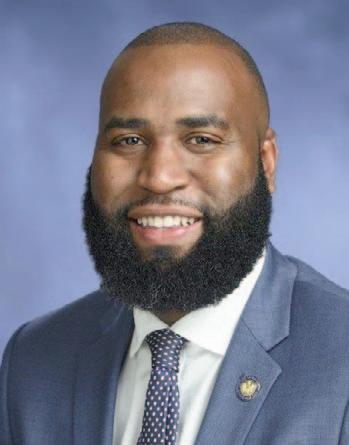
3 minute read
EDUCATION
Charter Schools/
continued from page 4
Advertisement
Academy Charter School Network, which operates over 49 schools, has battled numerous negative feedback on its inability to handle kids under 10 with unique struggles adequately. According to analytical reports from The City and ProPublica based on NYPD data, the school called 911 on kids under ten between July 2016 and 2022 more than 85 times to help them manage a couple of the kids with disruptive behavior and exhibited some distress.
Such controversial issues surrounding charter schools in New York will likely continue because of the presenting facts and evidence for and against the arguments. Some of these are worth considering and discussing before concluding because of the far-reaching effect of these decisions. For instance, while charter schools receive funding from the state, it is established that funding per student in these schools is less than what is given in traditional public schools. They argue that charter schools are not obligated to provide their students with certain levels of specialized services, transportation, and special education.
Some charter schools are more handson in managing children and parents that fall outside the continuum, and they are also often located in 'safe or "normal" neighborhoods than traditional public schools. This is because charter schools often result from dissatisfied parents unhappy with their local public schools. The controversy surrounding charter schools is complex, and there is no easy answer. It is essential to weigh all the evidence before forming an opinion.
Charter Schools and Ways of Addressing Needs of Black and Brown Students

As of the time of this report, findings show that by the 2022–23 school year, New York will have over 340 charter schools in operation, serving over 170,000 students.
Most schools offer smaller class sizes and personalized learning, focusing on building a student's area of academic deficiency with a significant amount of parental involvement. This combined approach results in improved educational outcomes.
Some other ways they address the specific needs of black and brown children include recruiting and retaining teachers of color who look like and understand the experiences of black and brown students. They also serve as positive role models in the classroom for the students. They also provide culturally relevant curricula relevant to their experiences as students and mentorship and community engagement programs that are culturally responsive, leading to improved academic achievement, self-esteem, and empowerment.
In NYC, some of the charter schools with the highest number of black and brown student enrollments based on their websites are Success Academy Harlem (98%), Success Academy Bronx 2 (97%), Success Academy Brooklyn 1 (96%), KIPP NYC College Prep (95%), Uncommon Schools Harlem Village Academy (94%), Achievement First Harlem (93%), Democracy Prep Harlem (92%), School for Social Justice (91%), and Urban Assembly Academy for Young Writers (90%).
Parents Want More Charter Schools
According to a new poll, signs indicate that parents strongly support charter schools — and want Gov. Kathy Hochul and Albany lawmakers to raise the stateimposed cap and open more publicly funded alternatives as an option for their kids. The online Morning Consult survey conducted for the pro-school choice Democrats for Education Reform (DFER-NY) concluded that 64% of parents favor charter schools. In comparison, only 22% have an unfavorable view, with the remainder undecided or having no opinion.
Even with strong parental support, Hochul and Democrats who control the state legislature and have close ties to the United Federation of Teachers (UFT), the anti-charter teachers’ union, have refused to raise the state-imposed cap, leaving about a dozen proposed schools in limbo.
On May 23, Assemblymember Brian Cunningham, District 43 in Brooklyn, sponsored Assembly Bill A7500 that would grant priority to charter school applicants with a board of trustees and school administrators of at least fifty-one percent minority group members. AM Cunningham had previously told the press, “This is a war on making sure our families have choices, that our parents can choose where they want to send their kids.”
Policy Changes to Enhance
Performance of Charter Schools for Black and Brown Students
Specific steps to improve the performance of charter schools for minority students include increasing funding for charter schools to provide students with resources and enhance the quality of education. Secondly, it is essential to introduce policies that will reform admission into charter schools, such as adopting admission policies that are fair, equitable, and non-discriminatory against black and brown students. This will ensure all students have an equal opportunity to attend a charter school. l










